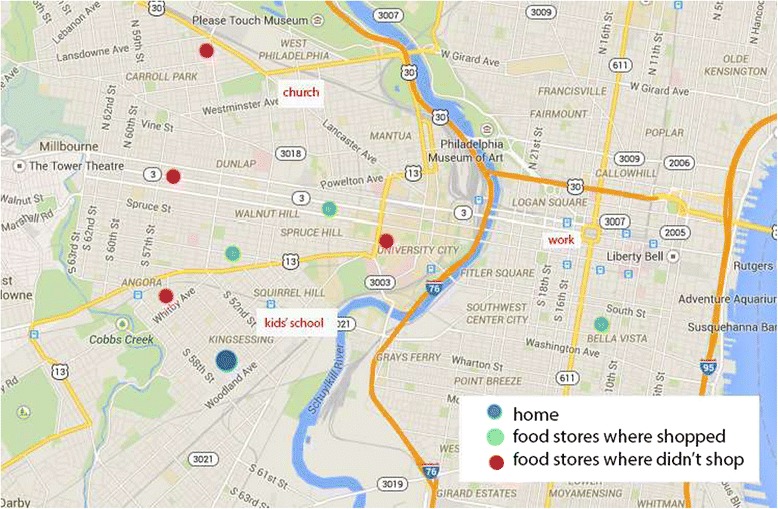Fig. 1.

A map, with artificial data, similar to those shown to participants during map elicitation interviews is pictured. Participants had provided their routine travel destinations, such as work and children’s school, and the address. These locations were mapped along with their home, their actual food shopping locations (from receipts), and food stores that were not shopped at but which were near their home or routine travels. These maps were used to discuss reasons for shopping or not shopping at particular locations
